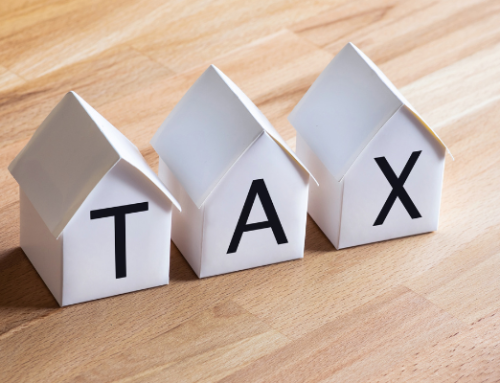By Ryan B. Paul, CPA
IN THIS ARTICLE:
The race for environmental stewardship in the commercial real estate (CRE) sector is on. Environmental, social, and governance (ESG) reporting frameworks are pushing public entities to standardize their approach to climate change metrics – eventually, these disclosures are likely to cascade down to some private entities, too. Then there’s the growing business case for climate action: consumers and investors are looking for more consistent, reliable strategies.
Carbon Reduction in CRE is more than an environmental priority; when CRE companies reduce their carbon footprint, investors, tenants, other consumers, employees, and the business’s bottom line all benefit. The question then becomes where to start.
At a glance:
- Commercial real estate comprises a significant amount of global carbon emissions, but the industry lags behind a standardized climate action plan.
- Ignoring the impact of climate change on commercial real estate comes with many risks, including higher costs and lower valuations over time.
- Tax incentives for renewable energy, energy efficiency, and electrification provide real estate stakeholders with options to offset the costs of green building upgrades.
Making the Case for Carbon-Reduction
For commercial real estate (CRE), the stakes are high. CRE is responsible for up to one-fifth of nationwide energy emissions each year. Globally, the built environment contributes 37 percent to carbon emissions (about ten percent from materials like cement and steel) and 34 percent of energy demand; buildings also impact air, water, and land pollution to varying degrees.
The risk of ignoring or putting off climate change imperatives extends to the portfolio valuation. Certain markets, especially Coastal areas and regions prone to flooding, wildfires, and other natural disasters, can expect to see their real estate portfolios significantly devalued over the next 20 years. One study of a diversified equity portfolio estimated that annual returns could be reduced by up to 40 percent over the next ten years if mitigating actions aren’t taken.
Climate change also introduces tangible risks that real estate investors and owners are likely to see more of over time, like:
- Higher utility, maintenance, and insurance costs
- Higher costs to bring an outdated building up to code
- Lower tenant demand in a carbon-intensive building
- Physical disruptions due to natural disasters
Industry-wide, CRE is lagging in adopting a structured climate policy and setting climate action benchmarks. Yet, reducing the carbon footprint presents an opportunity to attract additional capital, new tenants, and new revenue sources.
Carbon-Reduction Strategies for Real Estate
Permanently removing carbon emissions from a building or an entire value chain and implementing clean energy or net-zero emissions standards is the goal. Carbon neutrality is when the building offsets any carbon emissions that it produces. Both are part of carbon reduction strategies, but it specifically seeks to remove carbon emissions from the entire value chain.
Many of the processes and best practices to reduce carbon in CRE already exist. For new projects, decisions about how to reduce the building’s carbon footprint can be made during the design and construction phases: setting policies and standards, energy usage objectives, mapping out the building lifecycle all the way through deconstruction.
For existing buildings and retrofits, a good place to start is by mapping out current overhead costs as part of an energy audit. Energy audits analyze current energy usage and identify opportunities to reduce energy consumption. The audit will reveal where to incorporate renewable energy sources and alternative fuels. Based on the audit results, property managers, owners, and investors can set property-specific goals for operational emissions.
It’s important for the energy audit to produce reliable, comprehensive data that can be used in financial decision-making. This data will set the foundation for determining whether a specific building or assets within a portfolio are meeting carbon reduction metrics.
Real estate investors will need to consider ways to incorporate portfolio-wide decarbonization strategies. Assembling a team of stakeholders, from investors to property managers and executives, should be involved.
Once the audit is completed, gaps identified, and the team established, the goal is to continuously make improvements on energy efficiency. Depending on the portfolio size, investors will need to prioritize which assets to replace, upgrade, or retrofit and allocate capital accordingly.
As part of the shift to renewable energy, electrification is a key component. HVAC, smart building systems, and electrifying the fleet of vehicles (if applicable) are all areas to look at. There are other alternative fuel sources to consider depending on the portfolio or asset goals. Solar, solar thermal, wind, geothermal, and biofuels all now come with substantial tax benefits for both new and retrofit projects.
Tax Incentives for Carbon-Reduction Strategies
Fortunately, upgrading, replacing, or building renewable energy systems now come with generous tax incentives. The Inflation Reduction Act (IRA) introduced or expanded dozens of energy tax incentives, including but not limited to:
Section 48 investment tax credit – covers solar, wind, and renewable energy projects. The base credit is six percent and applies to standalone energy projects, making it ideal for CRE
Section 179 tax deduction – covers energy-efficient upgrades to new or retrofit commercial buildings. A base deduction of $0.50 per square foot is available for 25 percent energy reduction in the overall building. Up to $5.00 per square foot is available, but projects must meet prevailing wage and apprenticeship requirements to qualify for the expanded deduction. Not-for-profit entities and REITs can now claim the deduction, too. Building owners can claim 179D every three years with qualifying upgrades.
45L tax credit – 30 percent tax credit per residential unit for renewable energy projects. The credit is worth either $2,500 or $5,000 per unit for meeting either ENERGY STAR® or Zero Energy Ready requirements, respectively. Multi-family units can qualify for $500 per unit with opportunities for bonus credits.
Electric vehicle credits – varying tax credits for new and used electric vehicles (EV)s, including commercial fleets, and EV infrastructure, like charging stations (Section 30C tax credit). Starting in 2023, EVs must meet domestic critical materials and battery components requirements. The 30C tax credit is only available to charging stations located in low-income communities.
These and other so-called green tax incentives can work together to maximize the impact of a carbon reduction strategy.
Taking action to reduce energy consumption in CRE requires a holistic strategy and dedicated resources. The benefits of implementing a decarbonization strategy far outweigh the risks of not doing anything; tax incentives can help to offset direct costs for these investments.
To have a discussion about energy reduction opportunities in your real estate portfolio, contact Ryan Paul, Partner on PBMares’ Construction and Real Estate team.





